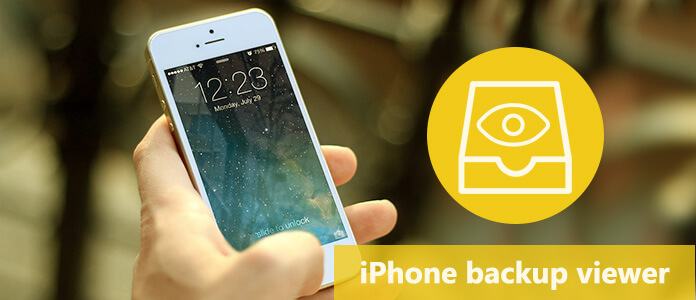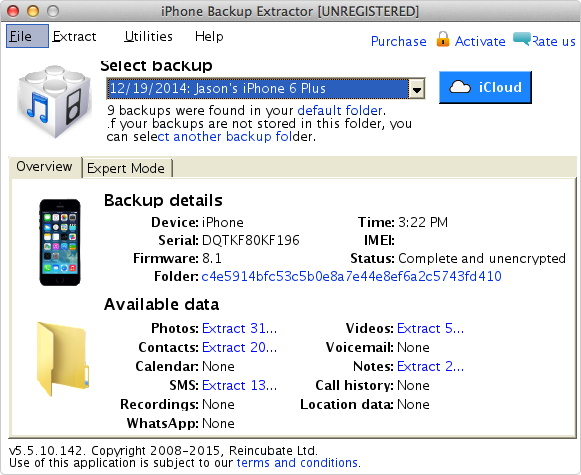

Once you've selected what you wish to extract, the operation is as simple as clicking a button.

With iBackup Extractor, you can choose the backup you wish to browse and extract files from, and proceed to view the backup of your Call Logs, Contacts, Messages, Photos, Calendars, Internet Browsing History and Bookmarks, Notes, Voice Mail, App Data, all directly in Backup Extractor. These are the backups created by iTunes when it synced your device in the past. It finds your iPhone, iPod Touch and iPad backups automatically. Well, iBackup Extractor is the right tool.

Everyone's been there - lost an iPhone, had it stolen? Your iPod got wet and it doesn't turn on anymore? iPad not working? Or maybe you just want to access your files without having to connect your iOS device. Some of these are your media files (pictures, videos, ect.) use details view and open files with the appropriate viewer.IBackup Extractor is the perfect tool to access and recover all your files from your iTunes backups. Inside each folder there will be several files each having a cryptic file name. these will change each time you sync the device with iTunes. if there is no date and time stamp at the end of the file then it is a iTunes sync backup. the third is the time stamp (HHMMSS) in 24 hour format. the second section is the date of the backup in the format (YYYYMMDD). XXXXXXXXXXXXXXXXXXXX-XXXXXXX-XXXXXXX) the first section is the identifier for the device. "hard backups" (those made by telling iTunes to backup device) will have two dashes at the end of the folder name separating to sections of numbers. you can then browse to the backup directory from there.)once you reach this backup folder there will be a folder in there for each backup made in iTunes. You can access all your media files from an iTunes backup in the following directories:# mac: ~/Library/Application Support/MobileSync/Backup/#windows xp: \Documents and Settings\(username)\Application Data\Apple Computer\MobileSync\Backup\#Windows Vista and Windows 7: \Users\(username)\AppData\Roaming\Apple Computer\MobileSync\Backup\(note in windows 7 and vista the directory "AppData" is a hidden system directory and will not be seen by default unless you change the setting in folder options in the control panel to show hidden directories, alternately you can access this directory by hitting start and entering in the search box %appdata% and hitting enter.


 0 kommentar(er)
0 kommentar(er)
